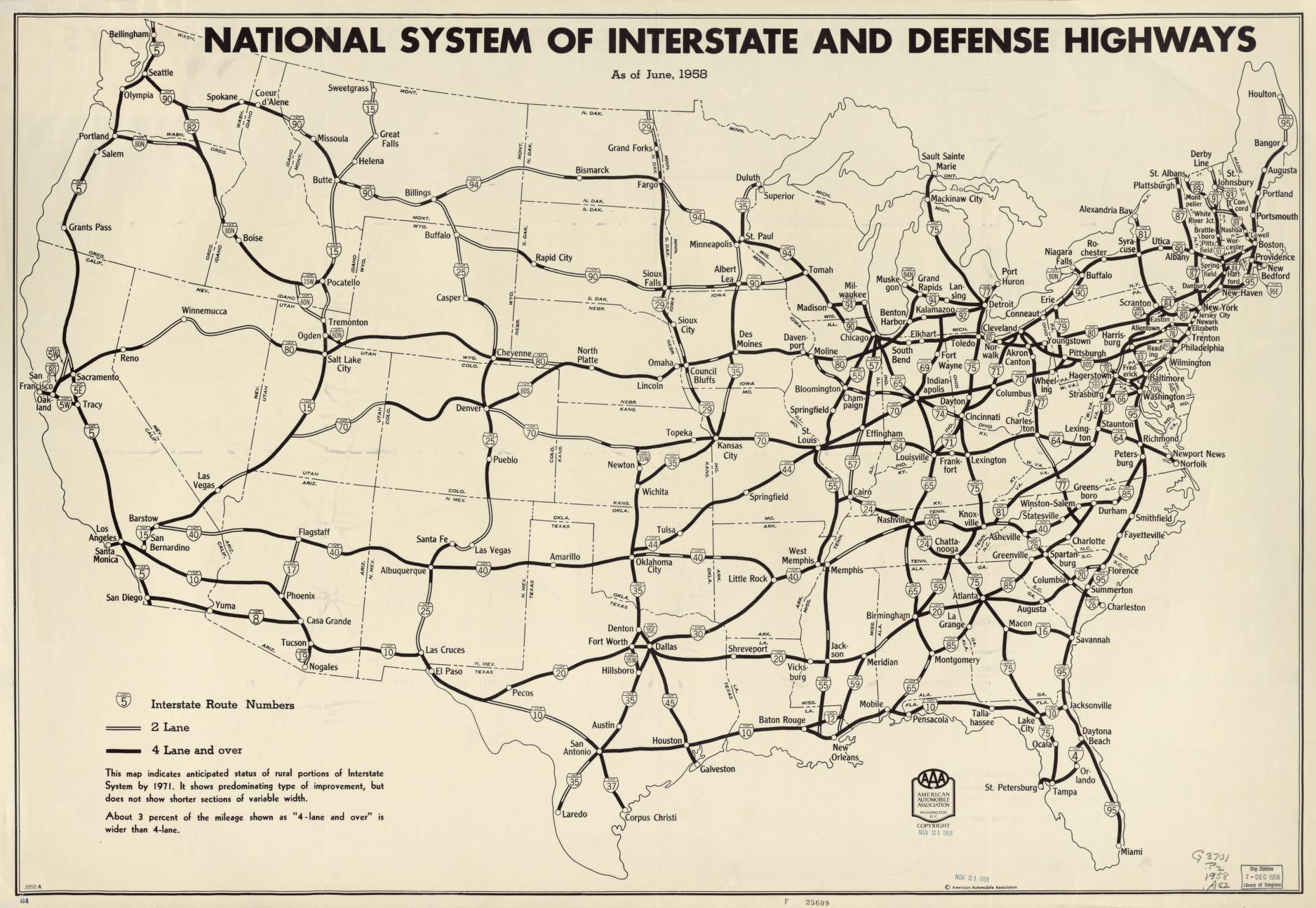National Interstate and Defense Highways Act of 1956

In 1956 there were 65 million cars on American roadways, with a forecast of 90 million by 1975. Clearly it was time for national action. Congress responded by passing the National Interstate and Defense Highways Act, which President Dwight D. Eisenhower signed into law on June 29th, 1956.
What Did the Interstate Highway Act Do?
The Interstate highway act kicked off what would become the largest public works project in American history up to its time. The Act provided the staggering sum of $51 billion dollars to be spent by the States to build the Interstate highway system by 1971, putting in place a 41,000-mile highway that would change the nation’s core freight transportation system from rail-based to truck-based. The highways also gave Americans the freedom to wander the country like never before.
Once the economic hardships of World War Two had ended, the United States enjoyed a period of economic prosperity that spanned the 1950s and 60s, which allowed Congress to fund the Interstate highway system by diverting defense funding into building highways, thinly rationalized as a vital link between Air Force bases scattered around the country.
Federal Interstate Highway Act
90% of Interstate construction costs were funded by the federal government, while each state was required to pay the remaining 10 percent through new taxes on fuel, automobiles, trucks and tires.
Comprised of a system of controlled-access highways, even-numbered Interstates travel east to west, with lower-numbered Interstates traversing the southern and south-western states, while the higher-numbered highways traverse the northern states of the country.
Odd-numbered Interstates travel north to south, with the lower numbered Interstates on the west coast, while the higher-numbered Interstates traverse the east coast. Today, the American Interstate highway system has grown only slightly since its first conception, providing a total of 46,876 miles for citizens and visitors alike to wander the American landscape.
